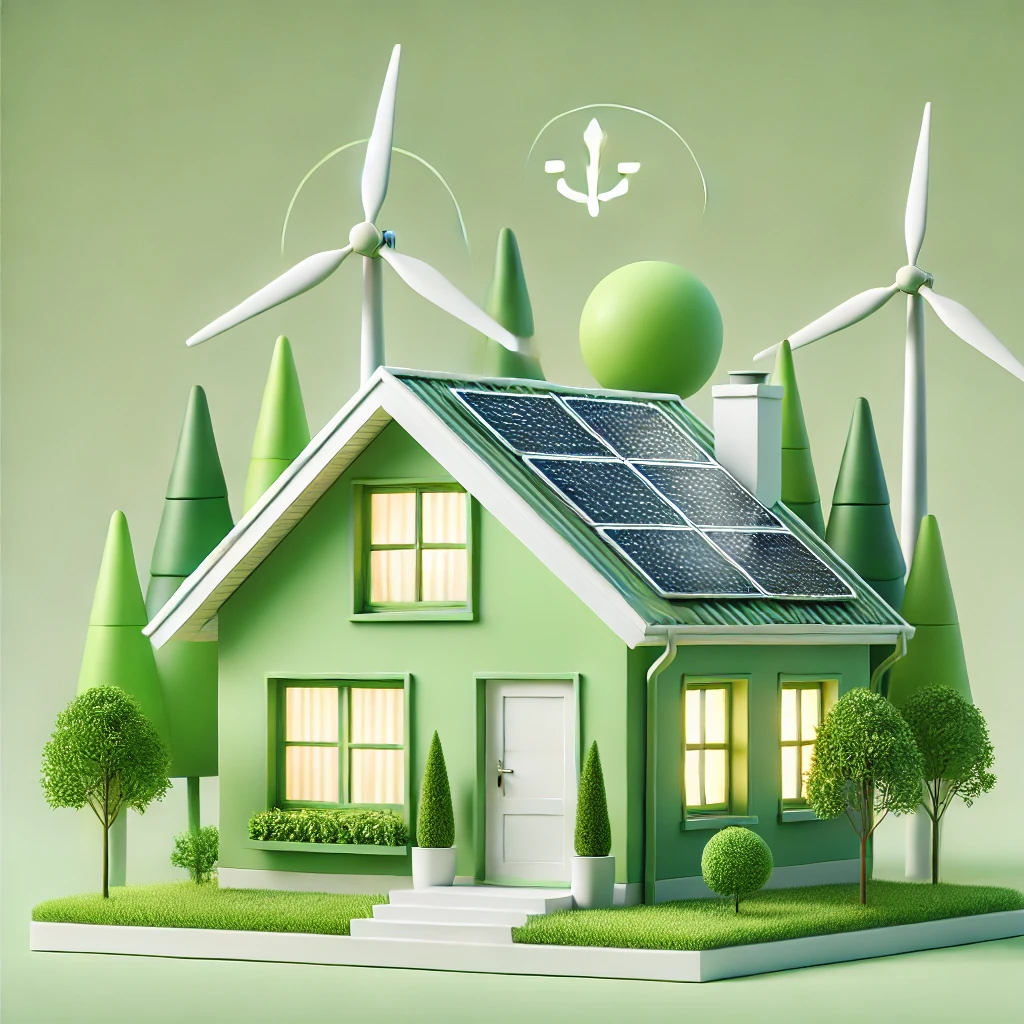Introduction: What is a Green Home?

A green home is designed with the environment in mind, integrating eco-friendly materials, energy-efficient systems, and sustainable practices to minimize environmental impact. Green homes not only reduce carbon footprints but also improve overall health and comfort for the inhabitants. According to a report by the U.S. Green Building Council (USGBC), green homes can reduce energy use by up to 30%, saving homeowners an average of $300 annually on utility bills.
This blog post will provide eco-friendly solutions for every room in your home, helping you achieve a sustainable, efficient, and healthier living environment.
1. The Core Principles of a Green Home
A green home follows a set of principles aimed at conserving resources and promoting sustainable living. These principles include:
- Energy Efficiency: Reducing the use of non-renewable energy through advanced insulation, energy-efficient appliances, and renewable energy sources.
- Sustainable Materials: Utilizing materials that are recycled, reclaimed, or sustainably harvested to reduce environmental impact.
- Water Conservation: Implementing water-saving fixtures and systems to minimize water waste.
- Indoor Air Quality: Prioritizing materials and systems that improve air quality, reducing exposure to harmful chemicals and pollutants.
2. Eco-Friendly Solutions for Every Room
Bedroom: Organic Bedding and Energy-Efficient Lighting
- Organic Bedding: Choose bedding made from organic cotton, bamboo, or linen. These materials are free from synthetic chemicals, pesticides, and dyes, which not only reduce environmental harm but also improve sleep quality by minimizing skin irritation.
- Energy-Efficient Lighting: Replace traditional incandescent bulbs with LED or CFL lights. According to the U.S. Department of Energy, LED lights use at least 75% less energy and last 25 times longer than incandescent lighting.
Kitchen: Energy-Efficient Appliances and Recyclable Materials
- Energy-Efficient Appliances: The kitchen is one of the most energy-consuming areas in the home. Upgrading to Energy Star-rated appliances can lead to significant energy savings. For instance, an Energy Star-rated refrigerator uses 15% less energy than non-certified models, saving around $200 annually on electricity bills.
- Recyclable Materials: Opt for cabinets, countertops, and flooring made from recycled or sustainable materials like reclaimed wood, bamboo, or recycled glass. These choices significantly reduce resource depletion and landfill waste.
| Appliance Type | Energy Savings with Energy Star | Average Annual Savings ($) |
|---|---|---|
| Refrigerator | 15% | $200 |
| Dishwasher | 12% | $40 |
| Oven/Stove | 10% | $25 |
Living Room: Sustainable Furniture and Smart Home Technology
- Sustainable Furniture: Invest in furniture made from sustainably sourced wood or recycled materials. Look for certifications like FSC (Forest Stewardship Council) to ensure the products are environmentally responsible.
- Smart Home Technology: Incorporate smart thermostats, energy-monitoring devices, and motion-sensor lights to reduce energy usage. Smart thermostats, such as the Nest Learning Thermostat, can reduce heating and cooling bills by 10-15%, according to a study by Energy.gov.
3. How Energy-Efficient Technology Supports Green Homes
Energy-efficient technology is essential in creating an eco-friendly home. Below are a few examples of how modern technology can be integrated into your home for sustainability:
- Smart Thermostats: Automatically adjust heating and cooling settings to minimize energy use.
- Solar Panels: Generate clean, renewable energy that can offset electricity bills. A typical residential solar panel system can save a household an average of $1,500 annually.
- Energy-Efficient Windows: Low-emissivity (Low-E) windows reduce heat transfer, keeping homes cooler in the summer and warmer in the winter, resulting in 20-30% energy savings.
Conclusion: Green Living is a Long-Term Commitment
Building a green home isn’t just a trend but a commitment to a healthier, more sustainable lifestyle. By incorporating eco-friendly solutions and energy-efficient technologies, homeowners can enjoy long-term financial savings, reduced environmental impact, and enhanced well-being.
